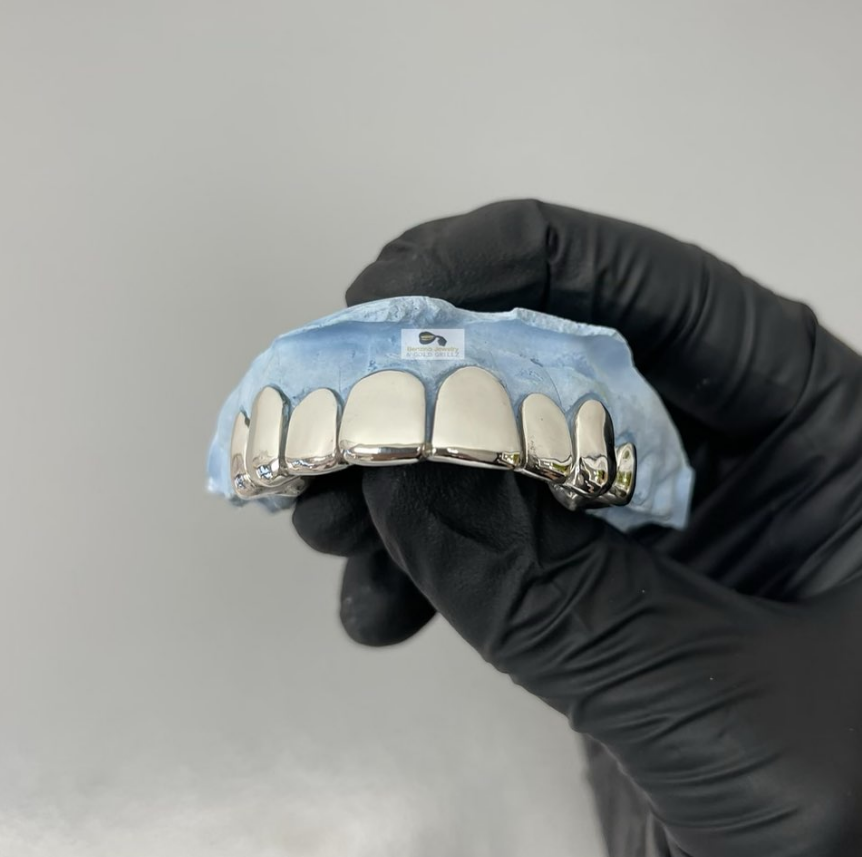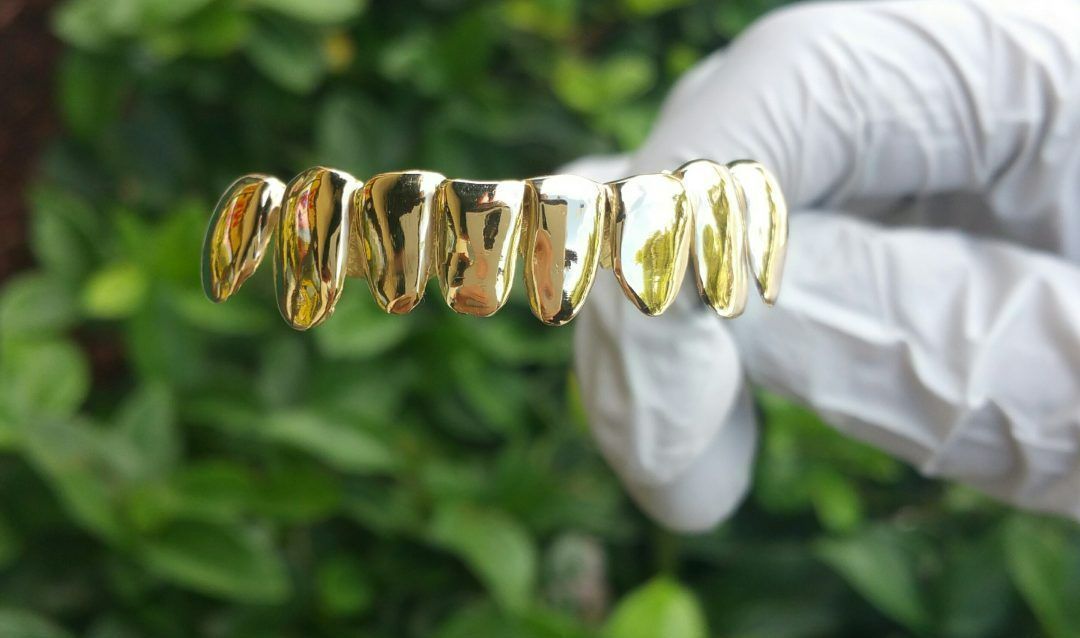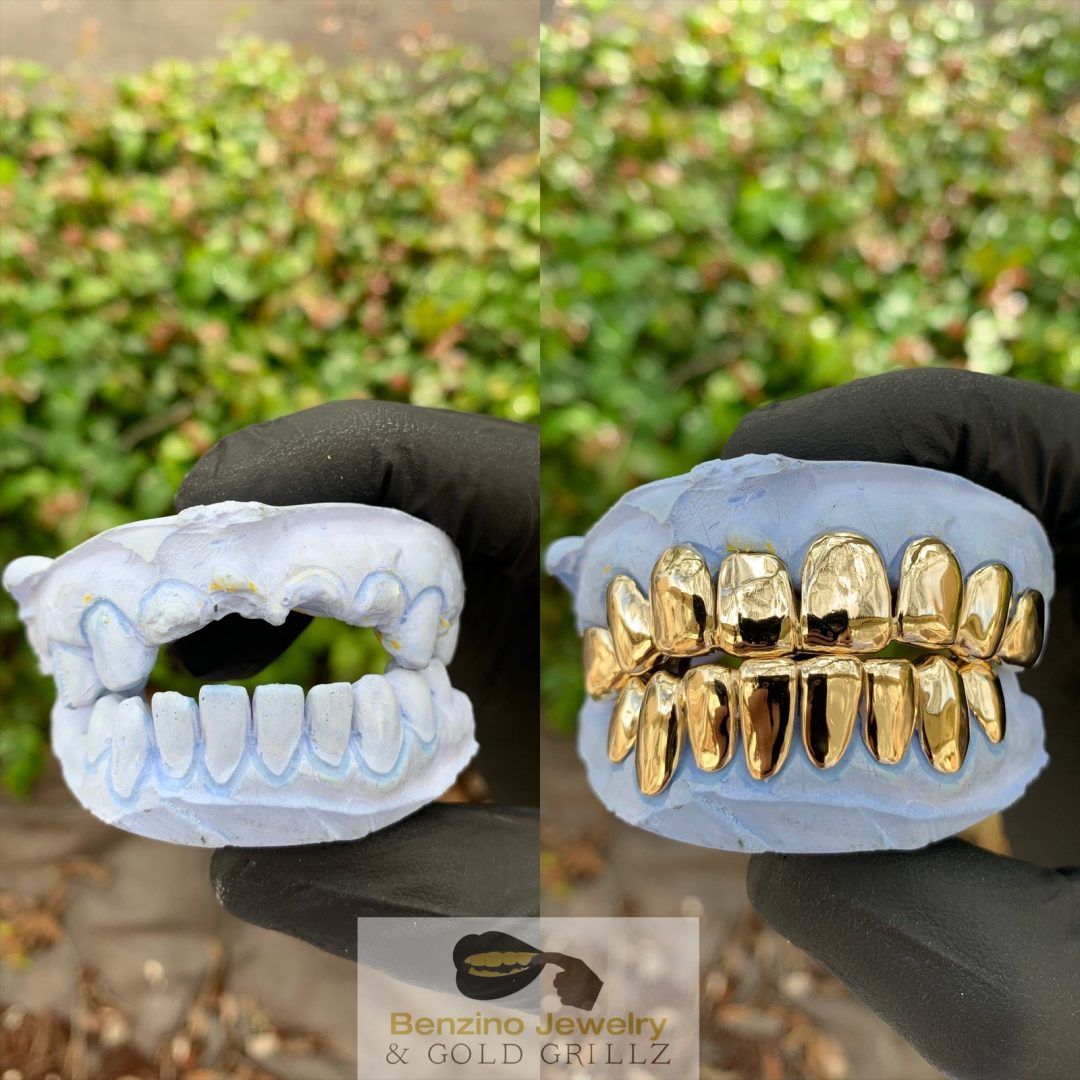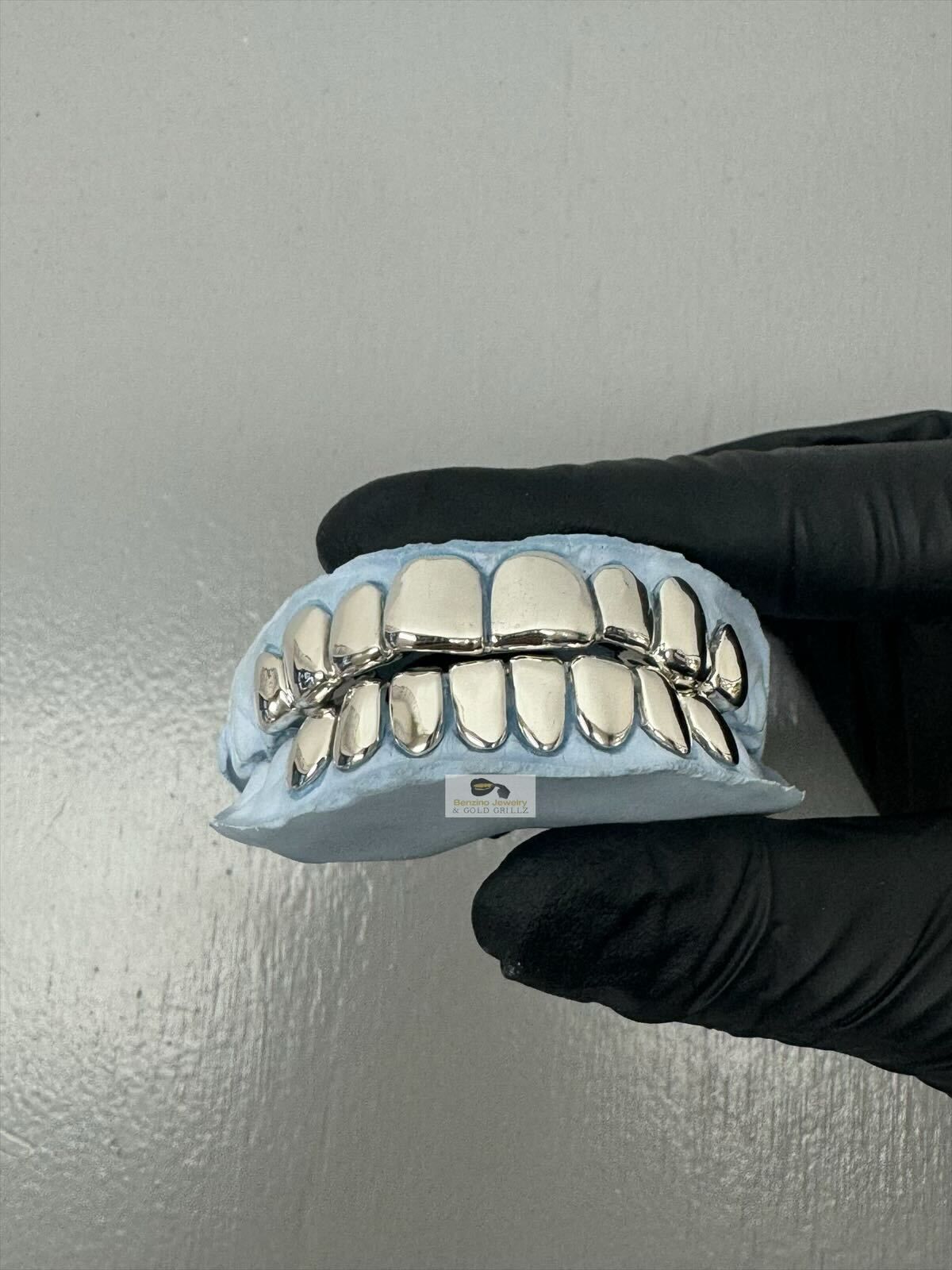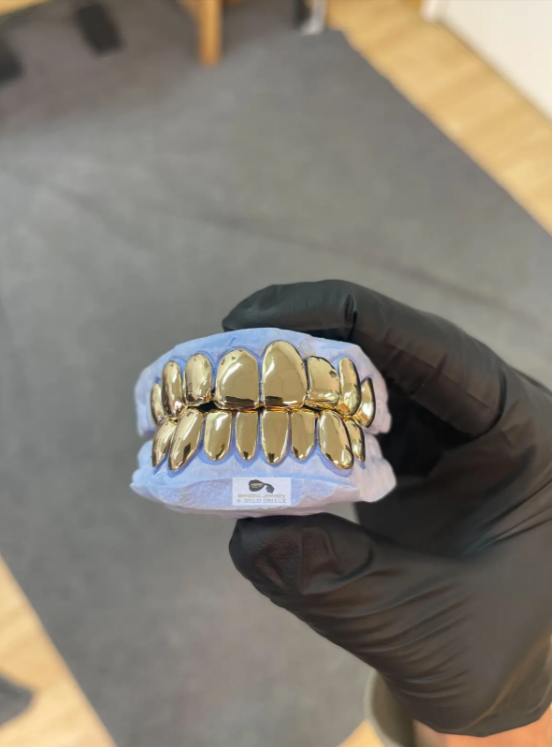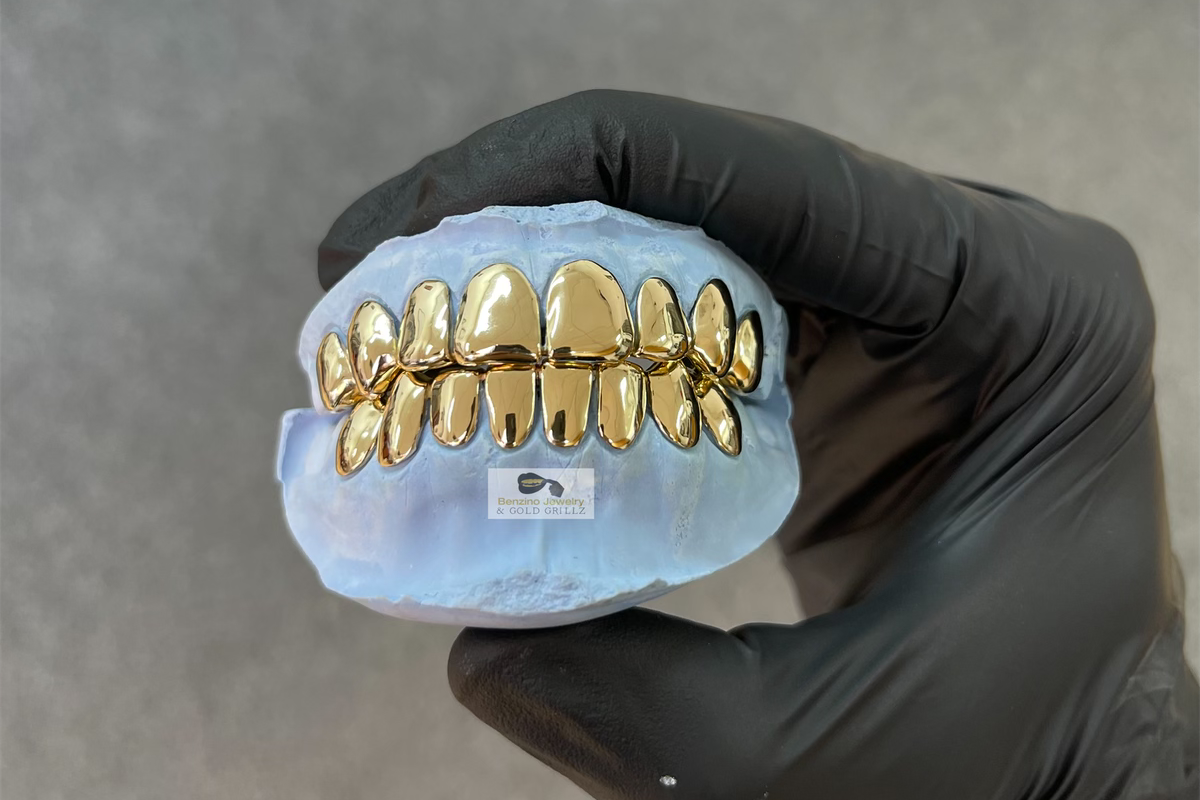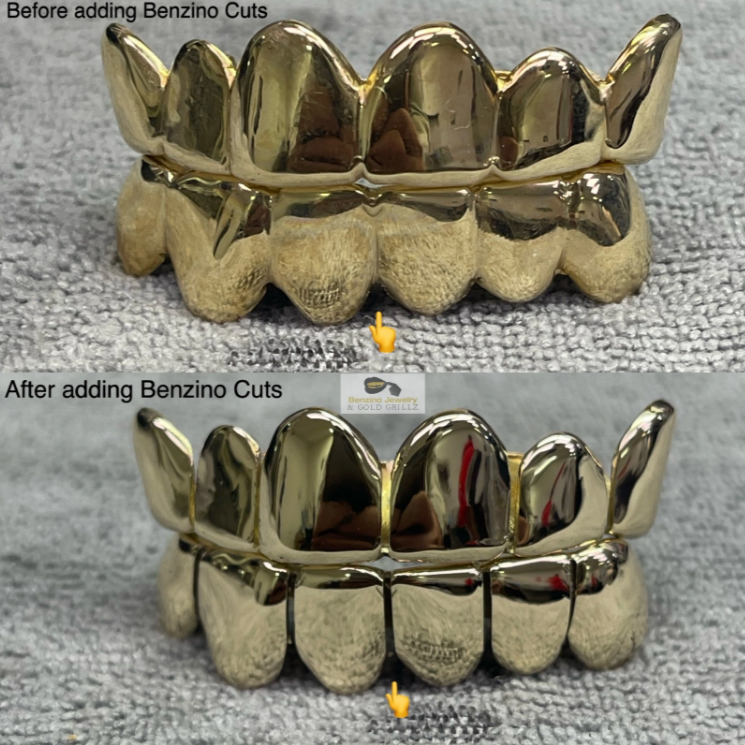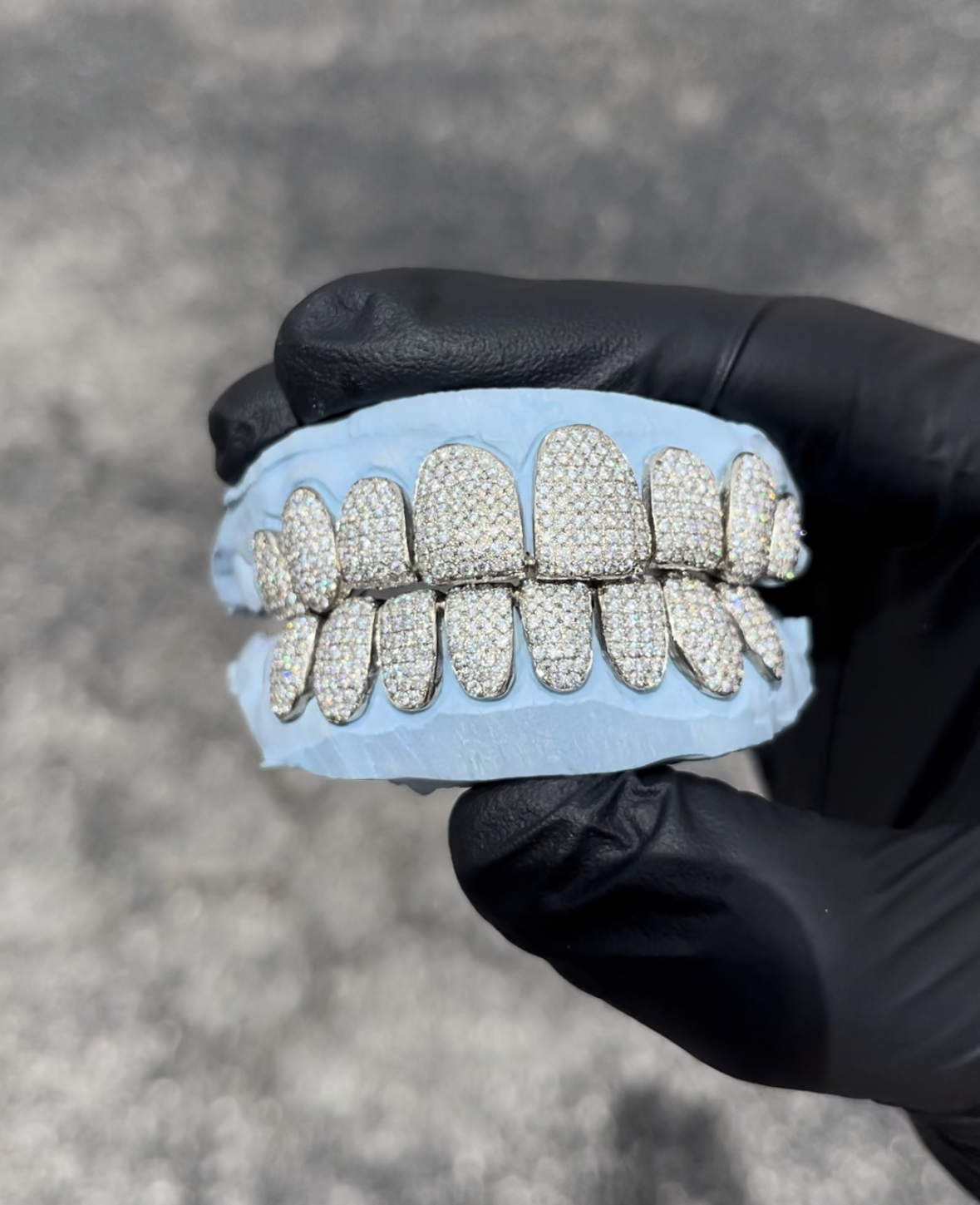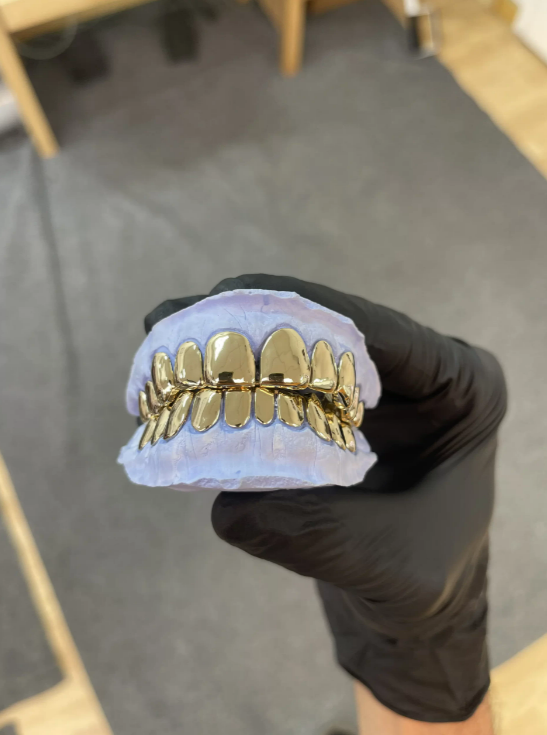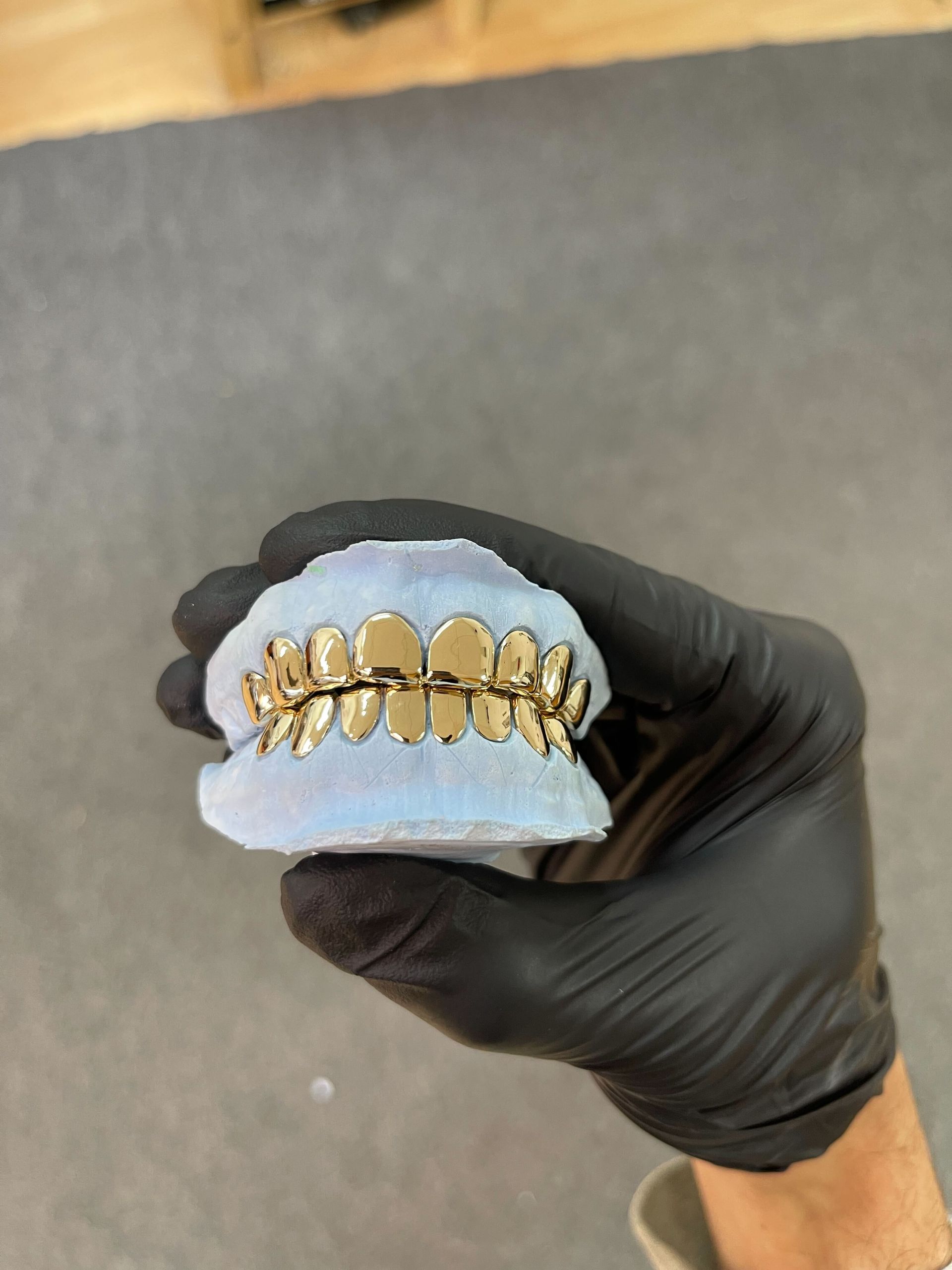Gold Teeth and Different Karats Grillz
Gold jewelry is available in various karat options, such as 10k, 14k, and 18k. These karats represent the purity and composition of the gold used in jewelry. Here are a few key differences between these three common types of gold for jewelry:
List of Services
-
Purity:List Item 1
The main difference between 10k, 14k, and 18k gold is their purity. 10k gold contains 41.7% pure gold, while 14k gold contains 58.3% pure gold, and 18k gold contains 75% pure gold. The remaining percentages consist of other metals, such as copper, silver, or nickel, which are added to enhance durability and alter the color of the gold.
-
The Color:List Item 2
Another distinction lies in the color of the gold. 10k gold tends to have a slightly pale or yellowish tone due to the higher percentage of other metals mixed in. 14k gold has a warmer, richer yellow color, making it a popular choice for many jewelry pieces. 18k gold has an even deeper yellow hue and appears more vibrant and luxurious.
-
Durability:List Item 3
As the gold purity increases, the durability of the jewelry also tends to improve. 10k gold, with its higher percentage of other metals, is the most durable among the three. It is less prone to scratching and bending, making it suitable for everyday wear. 18k gold, on the other hand, is softer and more malleable due to its higher gold content, making it more susceptible to wear and tear. But Benzino Jewelry uses stiff alloys to ensue all gold karats are strong and stiff for daily wear.
-
Another key factor is the Price:List Item 4
The price of gold jewelry is influenced by its karat weight. As the karat weight increases, so does the price. 10k gold is usually the most affordable option since it contains the least amount of pure gold. 14k gold falls in the mid-range, offering a balance between affordability and purity. 18k gold is the most expensive due to its higher gold content, making it a more luxurious choice for those willing to invest in higher-quality jewelry.
-
Not often but Allergies:
Some individuals may have allergies or sensitivities to certain metals used in gold alloys. 10k gold, which contains a higher percentage of base metals like copper or nickel, may cause allergic reactions in those who are sensitive to these metals. In comparison, 14k and 18k gold, with higher gold content, are generally considered hypoallergenic and less likely to cause adverse reactions.
